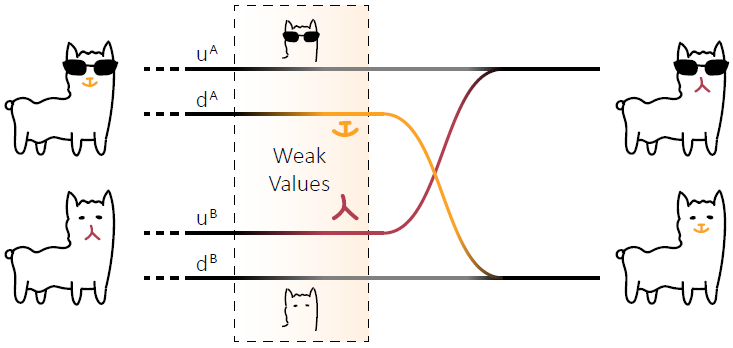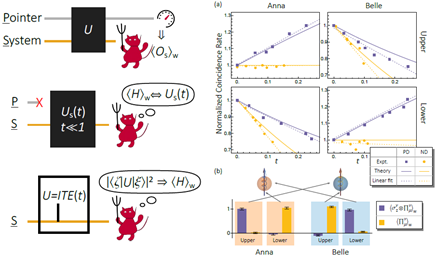Two Quantum Cheshire Cats Exchange Grins
Prof. LI Chuanfeng, XU Jinshi, XU Xiaoye Xu from CAS Key Lab of Quantum Information of University of Science and Technology of China (USTC) of Chinese Academy of Sciences (CAS), collaborating with Prof CHEN Jingling from Nankai University, realized the non-contacing exchange of the polarization of two photons, revealing the unique quantum characteristics of the Quantum Cheshire Cat. It deepens the understanding of the fundamental problem of physics, what is physical reality. The result was published in Nature Communications on June 15.
In classical world, an object should carry all of its physical properties. However, in quantum world, a quantum object may not act in such a manner—it can temporarily leave some of its physical properties where it never appears. This phenomenon is first proposed in 2013 by Yakir Aharonov, which is known as the quantum Cheshire cat effect. Cheshire Cat is a grinning cat in the fairy tale Alice in Wonderland. It can disappear, but its grin is still hanging in the air.
In the next few years, experimental physicists observed the separation of the particle properties from the particles in the neutron and photon interference experiments. Scientists soon realized that the results of these experiments could be explained by the classic interference theory. To show the unique quantum effects of Quantum Cheshire Cat, however, more complicated experiments were needed.
For the first time, LI Chuanfeng's research group uses the two-photon system to demonstrate the unique quantum effect of two quantum Cheshire Cats exchanging grins. Weak values are required to characterize the location of Cheshire cat and its grin in experiments. However the extraction of weak values in multi-body quantum systems is a big problem.
Researchers proved that the traditional weak measurement method can be bypassed by applying a perturbation to the system. The weak value can be obtained directly by using the inherent relationship between the system detection probability and the strength of the perturbation.


Figure 1: Schematic illustration and design of experiments (Image by LI Chuanfeng et al.)
Researchers prepared a two-photon hyper-entangled state, that is, the polarization and path degrees of freedom of the two photons are respectively in the maximum entangled state but there are no correlations between the two degrees of freedom. Then imaginary time evolution introduces perturbation to obtain the weak value of path and polarization of the photon. Through these weak values, the researchers observed that every photon and its polarization are separated, and finally the polarization of the other photon is obtained. The non-contacting grin exchange of the two quantum Cheshire cats is realized.

Figure 2: Experimental results (Image by LI Chuanfeng et al.)
Paper link: https://www.nature.com/articles/s41467-020-16761-0
(Edited by LU Hongyu, USTC News Center)
Back
